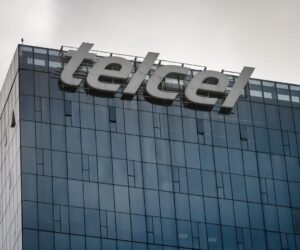Are we living in a Digital Gilded Age?
getty
Watching HBO’s The Gilded Age has made me reflect on the Industrial Revolution of the 1870-1890s—a time that brought us railroads, automated manufacturing, and created many new millionaires. The similarities to today are striking and make me wonder: Are we living through a second Gilded Age?
Over the decades, I’ve witnessed the rise of many influential figures who’ve shaped our digital world. But lately, I’ve been struck by an uncomfortable similarity that keeps nagging at me: the billionaire tech leaders of today bear a striking resemblance to the millionaires of the Industrial Age.
Let me be clear—I’m not someone who criticizes success or innovation. Throughout my career, I’ve admired the transformative power of technology and the entrepreneurs who make it possible. But as I look at the tech landscape in 2025, I can’t help but see echoes of Mark Twain’s The Gilded Age—a thin layer of gold masking deep social and economic inequities.
The numbers tell a stark story. Today’s tech billionaires have amassed fortunes that dwarf even the inflation-adjusted wealth of Carnegie and Rockefeller. These tech titans control platforms that billions use daily, shaping not just commerce but the very flow of information and social interaction. And like their predecessors, they wield this power with minimal oversight and accountability.
Consider the parallels: During the 1870s – 1890s, a handful of industrialists controlled the railroads, oil, steel, and banking—the backbone of the industrial economy. Today, a small group of tech leaders controls the digital infrastructure on which we all depend: our communication networks, marketplaces, news sources, and even our transportation systems. Back then, if you wanted to ship goods across the country, you had to deal with railroad monopolies. Today, to reach customers online, you primarily go through a few dominant platforms.
The first Gilded Age was characterized by extreme wealth concentration alongside poverty and labor exploitation. Factory workers toiled in hazardous conditions for poverty wages, while industrialists built lavish estates. Today, we read about gig workers struggling without benefits or job security, warehouse employees monitored by algorithms, and content moderators traumatized by what they must review—all while their employers accumulate wealth at unprecedented rates and launch space programs.
What troubles me most isn’t the wealth itself—innovation deserves reward. But how does that wealth translate into outsized influence over democratic institutions? The titans of the late 1800s bought politicians and wrote legislation that favored their interests. Today’s tech leaders fund political campaigns, hire armies of lobbyists, and increasingly own the media platforms where political discourse happens. When one controls the town square and can afford to influence the lawmakers who regulate it, we have a problem.
Problems are also noted in environmental consequences of this digital era. According to the EESI, AI-driven data centers are fueling unprecedented boosts in water and energy consumption, with significant consequences for communities hosting these facilities. A single 100-megawatt data center can consume 2 million liters of water per day—equivalent to the needs of thousands of households—and up to 5 million gallons daily in extreme cases, often exceeding local supply capabilities. These demands are particularly acute in water-stressed regions, such as rural Georgia and the American Midwest, where residents have reported direct disruptions to their water supplies and increasing competition for limited resources.
Energy usage is similarly intensive, with AI workloads projected to account for nearly half of all data center electricity demand globally by the end of this year—contributing to rising emissions and local infrastructure strain. The consolidation of industries—tech, retail, and media—into a handful of powerful data center operators intensifies these conflicts, creating monopolistic behaviors and restricting competition. In the process, community and environmental priorities are often sidelined in favor of corporate interests. These issues highlight critical challenges and conflicts of interest in local governance, resource allocation, and environmental stewardship.
Over the years I’ve spoken with many of these tech leaders. Most are genuinely brilliant, propelled by visions they believe will advance humanity. Yet, noble intentions don’t erase the risks associated with concentrated power. Andrew Carnegie also believed he was serving the greater good, and his funding of libraries and universities undoubtedly left a lasting, positive legacy. But during the 1892 Homestead Strike, his steelworkers had a far less charitable view of that benevolence.
The first Gilded Age eventually gave rise to the Progressive Era, which brought about antitrust actions, labor rights, and regulations to curb unchecked corporate power. The question we face now is whether we’ll summon similar courage. The challenge is arguably more difficult today because technology platforms are more complex than railroads, and their owners are more savvy about public relations and regulatory capture.
I’m also troubled by the narrative that technological innovation requires accepting this concentration of power. That’s false. The internet’s most significant innovations came from distributed, open-source collaboration, not monopolistic control. The personal computer revolution was driven by competition among multiple players, rather than a single dominant force.
History suggests change is possible. Public awareness is growing about data privacy, platform power, and wealth inequality. Regulators in the U.S. and Europe are finally taking antitrust concerns seriously. Workers are organizing. Journalists are investigating. The conversation is shifting.
But we need to be honest about what we’re facing. This situation isn’t just about taxing billionaires more or breaking up a few companies. It’s about fundamentally rethinking the relationship between technological power, democratic governance, and economic fairness. It’s about asking whether we want a digital future that concentrates power and wealth, or one that distributes opportunity more broadly.
The first Gilded Age taught us that unchecked capitalism, however innovative, eventually produces social instability that demands correction. We shouldn’t have to learn that lesson twice. The technology these leaders have created is remarkable—it’s changed my life and work in countless positive ways. But the social and work structure they’ve built around it increasingly resembles what we thought we’d left behind in history books.
As someone who loves technology and believes deeply in its potential, I still think we can do better. We can innovate without creating oligarchies, make progress without exploitation, build technologies that protect natural resources and strengthen democracy rather than weaken it. But right now, the parallels to the Gilded Age are hard to ignore. Then, steel and rail shaped the world; now, it’s data and algorithms. Unless we confront what we’ve built—and who it serves—we may find our digital revolution is less a new era than a fresh layer of gilding over the same old system.









